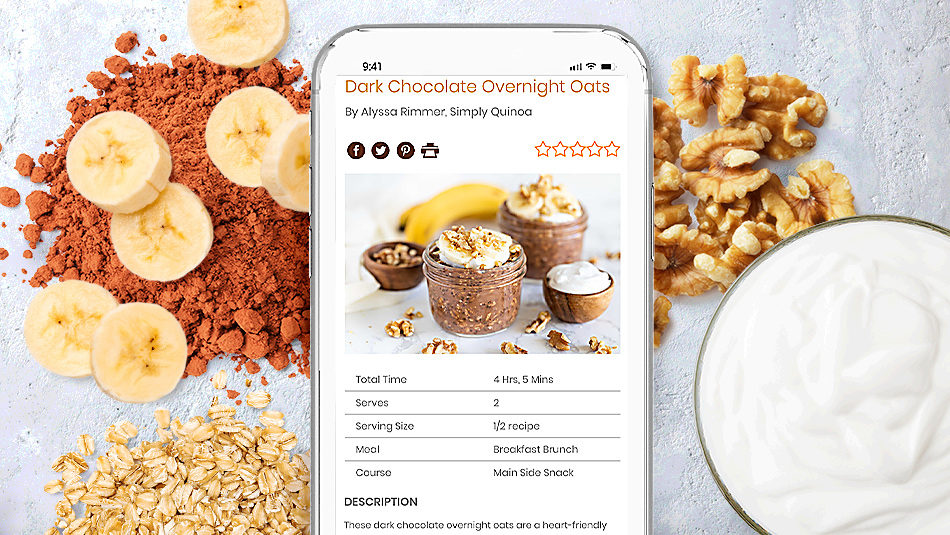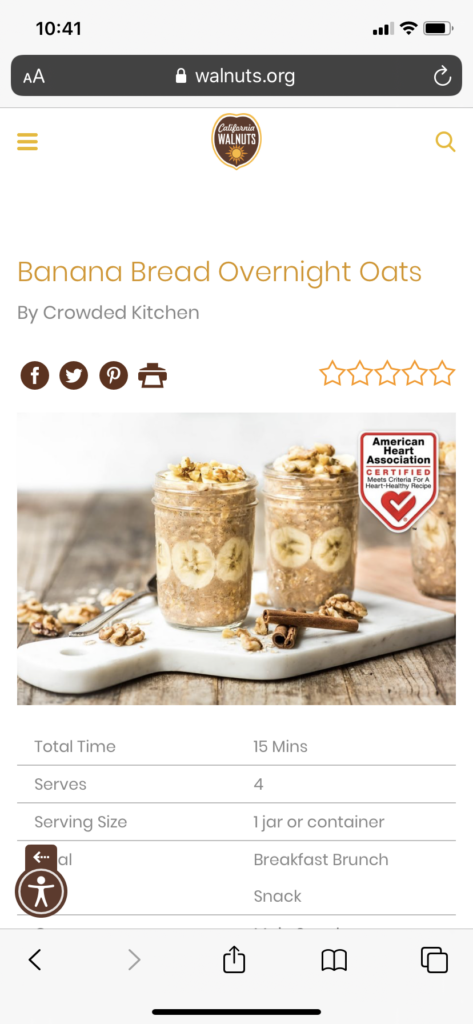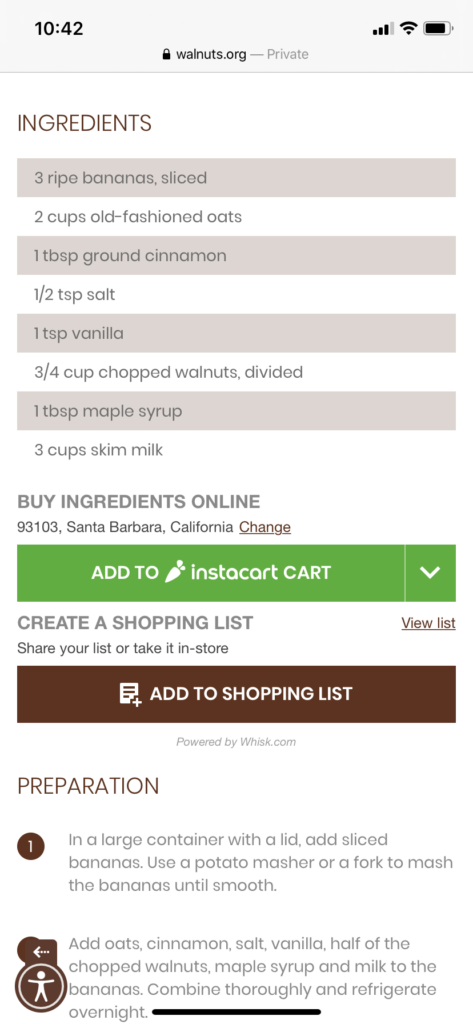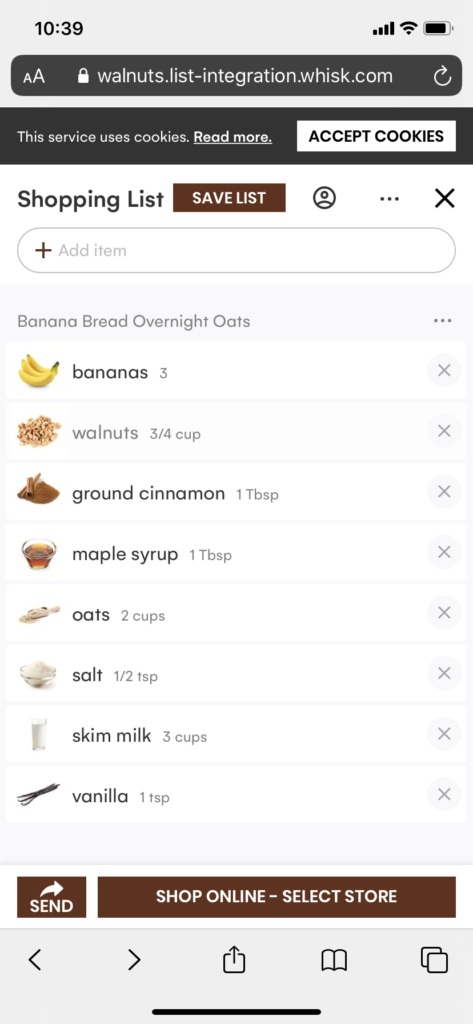
Monetizing Recipe Content: How Food Commodity Boards Can Capitalize as Online Grocery Surges
If there’s anything food marketers have learned over the past couple of months, it is how important an e-commerce channel strategy is. With consumers urged to stay home, online grocery shopping has grown exponentially. Home delivery has become an essential service for those who are elderly or immunocompromised, and it has become exceedingly valuable to those in self-isolation. Services like Instacart and Amazon Fresh are experiencing extremely high demand with an increase in the total number of orders, as well as the size of individual orders. And there are no signs of slowing down!
Now is the time to leverage compelling new e-commerce platforms to increase sales of your food commodity boards.
U.S. Consumers Are Open to Trying New Online Opportunities
- A survey by C+R Research found 60% of U.S. shoppers are fearful of shopping inside grocery stores, with 73% saying they are shopping less at physical stores.
- Another survey found 49% of consumers said they started buying or are buying more groceries online because of the outbreak.
- During the first week of March 2020, just 11% of adults said they were shopping more for groceries online. By the week of March 22, that figure jumped to 37%.
- Home delivery and store pickup online grocery sales reached a new 30-day record for April: hitting $5.3 billion and marking a 37% increase from $4 billion in March.
- The month-over-month sales growth reflects a 33% increase in the monthly number of online orders, from 46.9 million to 62.5 million, plus a 3% gain in order size – from $82 to $85 – as households continue stock-up purchases of essential products.
In addition to more people buying groceries online, people are buying more types of items (produce, meat, alcohol) online. On average, they are buying across five different grocery categories online, up from 4.4 categories last year. This indicates people aren’t just buying one-offs, but rather they’re doing full-basket shopping online. In this environment, brand names have become less important to consumers, and many are willing to turn to any retailer or brand that can provide them with the items they need – even if they would not have previously considered using them.
Is Online Grocery Shopping Here to Stay?
As some cities remain on lockdown and others move into the early phases of reopening, consumers are still avoiding public spaces. Many are continuing to limit their shopping trips, turning instead to online grocery shopping.
- According to the US Online Grocery Survey 2020, the online grocery sector will continue to grow by roughly 40% this year. The report states, “That would equate to almost $38 billion of online food and beverage sales in 2020, or around 3.5% of the total market.” That’s up from 2.6% in 2019.
- Demand for online grocery shopping will remain strong over the next year, as 62.5% of U.S. consumers expect to do so in the next 12 months.
- According to eMarketer’s list of things U.S. adults are likely to do once the pandemic is over, ordering groceries online is close to the top of the list.
Clearly, consumers have discovered online grocery shopping and plan to continue.
Food Commodity Boards Can Get in on the E-Commerce Action
With consumers willing to try new channels and new brands, creative food marketers have seemingly endless possibilities to engage consumers right now.
However, in the food commodity board space (where there is technically no SKU to sell), e-commerce has proven to be challenging to navigate. Often success comes in the form of soft metrics like impressions, CTRs, website traffic, time on page and recipe downloads. What happens in the customer journey after that is not always crystal clear.
So can food commodity boards get in on the action? Can they leverage changing consumer behaviors and grow e-commerce sales of their commodity? I think so!
How to Integrate Shoppable-Recipe Functionality
The answer to e-commerce for food commodities is a content-to-commerce strategy called “shoppable-recipes.” Shoppable-recipe platforms like Whisk and Chicory provide a means for commodities to leverage their existing digital properties – namely, the recipes on their website – to move the customer down the journey to tangible action: purchase. Shoppable-recipe functionality ultimately turns inspiration into action and allows for commodities to monetize content and grow ROI.
With a shoppable platform in place, consumers can create a shopping list directly from any recipe on your website. With a click of a button, they can print, add items to their mobile device for in-store purchase or even check out online with grocers such as Instacart, Amazon Fresh, Walmart and Kroger.



One of the reasons why these platforms are perfect for commodity boards is that they are keyword based. This means they function similar to a search engine. When you set up the platform, you provide the keywords or search terms you want. This allows you to avoid brand names or product-specific names.
And integrating shoppable-recipe functionality into your recipe pages is easy. It just takes a single line of code.
6 Tips for Developing a Great Shoppable-Recipe Content Strategy
Now that your website is set up with this new functionality, how can you get the most out of your shoppable-recipes? Kick things off with a solid foundation by developing a content strategy to support your investment.
Feature Craveable Photography
As they say, “A picture is worth a thousand words,” so be sure to invest in quality recipe photography. Create images that are light and bright and have plenty of appetite appeal. Recipes with attractive images are much more likely to get engagement, and with a shoppable-recipe strategy, that translates into more potential sales.
Set Goals and Establish KPIs
After observing metrics for a few months, set benchmark goals for your purchase intent and behavioral metrics. These metrics include number of lists created, recipe downloads and recipe prints, as well as sales by retailer. Remember, you first need eyes on your site’s recipe pages in order to get the consumer down this path to make a purchase, so set goals for your traffic as well. Regularly review reporting and dashboard metrics for any trends in the data. This will help you make necessary pivots to ensure page engagement remains high.
Understand Your Target Audience Needs
Behind every successful content strategy, data is being collected that can show you what visitors care about most. Ensure you use different sources of data so you are focusing resources on relevant, highly discoverable recipe content.
To successfully do this, understand the nuances of your audience’s eating, cooking, buying and lifestyle habits. What do they care about? What are their shopping habits? Are they health minded? Or are they more indulgent? This data may come from trend reports or existing data patterns in traffic to your website.
For example, in the months of March and April 2020, for one of EvanHardy+Young’s clients, we saw “back-to-basics” recipe content resonating with our target audience. Focused on simplicity, these recipes used minimal ingredients and shortcuts to make life easier. Traditionally, this client’s audience was health minded, but we also noticed a slight shift from health-focused to more-satisfying meals that could be made in bulk to comfort and nourish families, which made sense during the pandemic.
Stay Abreast of the Latest Food Trends
Understanding food and diet trends can help you develop content that will attract new visitors. These insights can be used to inform content themes and campaigns, ensuring you are always curating and promoting content that is most valuable to your growing audience.
For example, according to Google Trends, in the first 60 days of the pandemic, EHY has seen a return to basics and comfort foods within our client’s top-searched recipes. Banana bread and sourdough starter ring a bell? In more recent weeks, we’ve also been observing emerging food trends related to breakfast popularity, functional ingredients and the fallout of a potential meat shortage.
The point is, you want to position your food commodity board’s content on topics with enough search volume to bolster awareness and sales. Maybe there is a use for your ingredient that consumers don’t know about? Now is a great time to get in front of your audience – when they are willing to listen and try something new.
Invest in Recipe Development
If you don’t have many recipes to promote at the moment, study your audience and trends and engage a professional recipe developer who can help you curate the right recipe content.
Optimize Webpages
Review your recipe pages and make sure they are optimized for your audience. For example, if your audience is health enthusiasts, make sure it is easy for them to find nutritional information. Ensure the page design is intuitive and user friendly. You want it to be easy for visitors to purchase recipe ingredients. Strong recipes based on trends are pivotal to good e-commerce strategy.
Give Your Foodie Audience a Clear Path to Purchase
Investing in shoppable-recipe technology and taking these steps will not only drive engagement with your current target audience, you’ll also reach new consumers and grow your base! With consumers’ growing willingness to shop in new ways, food commodity boards have a great opportunity to move consumers all the way through the path to purchase. And with the right strategy in place, you can cultivate a tangible return on each investment.






